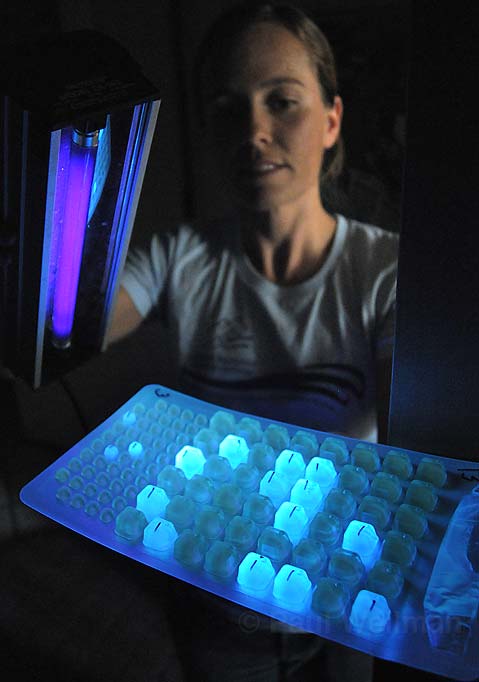Nonprofit Steps in When County Stops Sea Sampling
Who's Watching the Beaches Now?
It is no secret that the much-needed rains that may fall in the Santa Barbara foothills this winter often result in less-than-ideal downstream realities-the related runoff and creek flow delivering bacteria-laced water to the beaches and surf zones below. Since 1996, Santa Barbara County’s Environmental Health Department was the guardian at the gate, conducting weekly water quality tests at more than a dozen area beaches, publishing its results online, issuing advisories, and posting bright orange beachside warning signs to surfers and swimmers when conditions required.
All that changed last June when the Board of Supervisors, hamstrung by financially trying times, pulled funding for the program. As of October 31, popular surf spots like Rincon Point, Hammonds Beach, and Coal Oil Point became effectively unmonitored. Enter ocean-minded nonprofit Santa Barbara Channelkeeper. Thanks to its members, nearly all area beaches that the county formerly kept tabs on were once again being monitored last Monday, mere hours after the first real rain of the season fell on the South Coast and precisely as the surf season’s first swells were kissing our coasts. “We don’t even have all the funding to pay for it yet,” explained Channelkeeper executive director Kira Redmond. “But it is just too huge of a public safety issue for us to just let it fall by the wayside.”

Following the same standards and sampling practices that the county previously conducted, Channelkeeper-which has long played an intricate role in water quality monitoring of area creek systems-will test the waters of 12 county beaches every Monday for the duration of winter. (The beaches include Rincon Point, Carpinteria State Beach, Carpinteria City Beach, Summerland Beach, Hammond’s Beach, Butterfly Beach, Hope Ranch Beach, Goleta Beach, Sands Beach at Coal Oil Point, Haskell’s Beach, El Capitan State Beach, and Refugio State Beach. The City of Santa Barbara has offered to check on Arroyo Burro and Leadbetter beaches as well as East Beach at Mission Creek and East Beach at Sycamore Creek.) Those checking will be looking for indicator bacteria long believed to be linked to human illness, such as fecal coliform and enterococcus.
Then, based upon thresholds provided by the California State Water Board, Channelkeeper will post any warranted advisories or warnings on its Web site, sbck.org, by Tuesday night as well publish their results in the Daily Sound, the Santa Barbara News-Press, and online at
independent.com the following day. Unfortunately, at least for now, a negative prognosis will not cause the brightly colored warning signs to be posted at afflicted beaches. According to Redmond, conversations are currently underway with the County Public Health Department to see if some sort of deal can be brokered that would allow the county to post signage based on the organization’s weekly tests.
It should also be noted, that while the winter water quality tests were previously paid for out of the county’s General Fund, the summer testings from April 1 through October 31 were funded directly by the state. And, in a move akin to the supervisors’ decision this past summer, Governor Arnold Schwarzenegger pulled the plug in early October on the mandatory seasonal program for financial reasons. Luckily, even as the state budget situation grows incrementally more dire, the California State Water Board voted last week to authorize some $2 million of Proposition 13 funding to restore the seven-month long summer season program throughout state for at least the next two years, though it remains to be seen when exactly those funds will trickle down to the counties.
In the meantime, Redmond reported this week that, even after the Halloween weekend rains, just about all area beaches surveyed on Monday passed with flying colors. Only Montecito’s Butterfly Beach and Santa Barbara’s Leadbetter Beach, both of which had excessive levels of enterococci bacteria, reached warning-level status.



